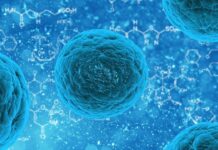In 2000, the Edmonton Protocol was a major Canadian success that resulted in a world first: it helped people with Type I diabetes become insulin-independent with a 100 percent success rate. Now, a new twist may one day make this life-changing surgery even better and easier to access.
Instead of trying to transplant insulin-producing islets in their native location in the pancreas, the Edmonton Protocol instructs surgeons to inject them into the neighbouring liver. Being in this alternate location is a big reason why enough islets survive, away from attacks by the immune system that killed off the patient’s original islets.
Despite this being a major advance for patients, there are still drawbacks. It often takes two or three donors to collect the large number of islets required, and even in the liver they can still be victims of the immune system. When too many die, the patient’s diabetes returns.
Researchers at the University of Toronto’s Medicine by Design group are working on both issues by harnessing the unique biology of the skin.
The first step is to get a solid supply of islets for transplantation. Maria Cristina Nostro, associate professor of physiology at the University of Toronto, is transforming stem cells into islets to obtain an unlimited supply.
Stem cells can be manipulated to make various specialized cell types. Nostro is using induced pluripotent stem cells (iPSCs), which can be made from adult skin cells. Her research helps find the right mix of cues to grow the stem cells and reprogram them into insulin-produced pancreatic beta cells that are found in islets. This work could ultimately bypass the need for multiple pancreas donors.
The next step is to find a more protected way to keep the transplanted cells alive, and a better place might lie just under the skin, says Michael Sefton, university professor of biomedical engineering at the University of Toronto.
The area just under the skin would make for a much simpler procedure, eliminating the need for a surgery. If anything goes wrong, the cells can also more easily be retrieved.
But unlike the liver, there aren’t enough blood vessels naturally available to support transplanted islets. Sefton is using a polymer gel containing methacrylic acid (MAA), and when used in mice it supports the transplant and helps extra blood vessels grow.
Sefton believes that the MAA may also influence the skin’s dendritic cells — a type of immune cell — to help the immune system tolerate the transplant. This could allow the transplant to survive without immune suppression. If successful in human trials, this strategy could be a more accessible and permanent cure for Type 1 diabetes.
“We place a huge emphasis on new ideas and research that is risky,” said Sefton in a press release.
“That’s the way you have to think when you want to really change things. I want people to hear about our work and think that what we are trying to achieve is impossible. l believe firmly that when it comes to disease, we don’t have to just accept what nature gives us with, say, cancer or stroke or diabetes. We can do better than nature.”





































